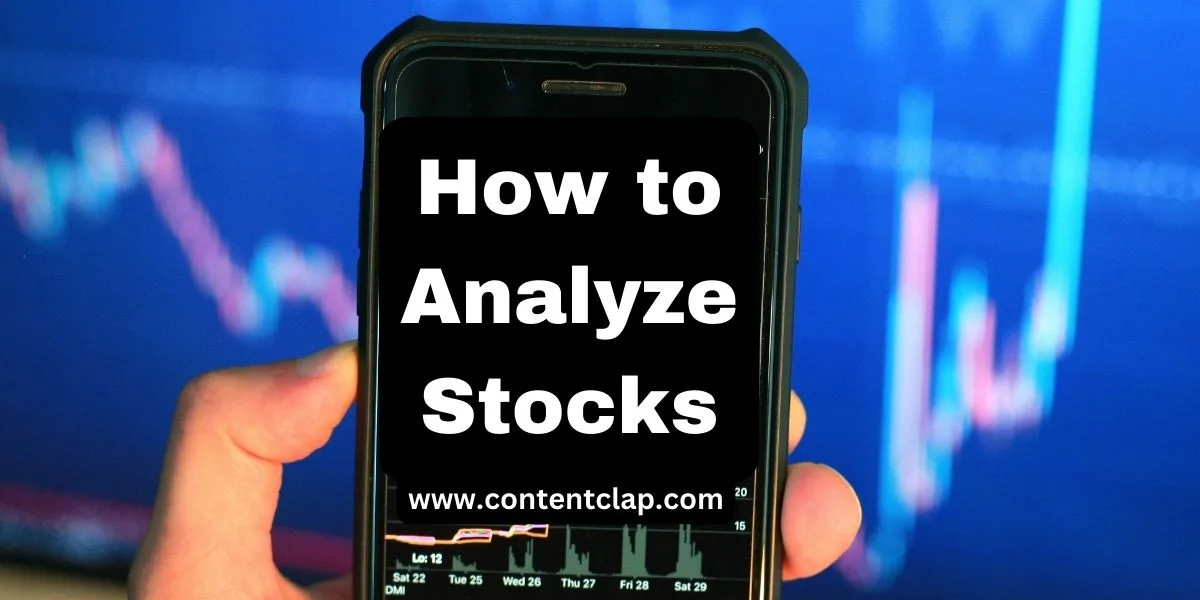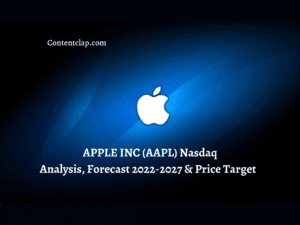Understanding how to analyze stock market trends is crucial for making informed investment decisions.
The US stock market, a complex ecosystem of companies and investors, offers both exciting opportunities and inherent risks.
This article key aspects of stock market trends within the US market context, highlighting essential approaches and providing valuable resources to aid your research.
Key Points - How to analyze stock market trends
Analyzing is the process of identifying and evaluating the prevailing direction of a stock’s price or the broader market over a specific period.
For investors seeking to make informed decisions and capitalize on market trends, a good understanding of stock market analysis is very much essential.
1. Understanding the Basics
To embark on the journey of analyzing stock market trends, it’s crucial to grasp the foundational concepts.
Start by familiarizing yourself with key financial metrics such as
Earnings per share (EPS)
Price-to-earnings ratio (P/E)
Dividend yield
These metrics provide insights into a company’s financial health and valuation.
2. Market Research and Economic Indicators
Regularly monitor economic reports and
forecasts, as they provide a macroeconomic context for your stock analysis.
Stay abreast of broader economic indicators that influence the stock market. Factors like GDP growth, unemployment rates, and inflation play pivotal roles in shaping market trends.
It’s crucial to lay the groundwork with comprehensive market research. Utilizing financial news platforms, economic indicators, and government reports can provide valuable insights.
Financial News Platforms
Bloomberg: A global financial news platform providing real-time market data, news, and analysis.
CNBC: A leading financial news network offering coverage of market trends, economic developments, and expert commentary.
Reuters: A trusted source for global financial news, including market insights, business trends, and economic updates.
Financial Times: A reputable international daily newspaper covering business, finance, and economic news.
Yahoo Finance: A comprehensive financial website offering news, stock quotes, and in-depth market analysis.
Economic Indicators
Gross Domestic Product (GDP): A measure of a country’s economic output and overall economic health.
Unemployment Rate: Indicates the percentage of the labor force that is unemployed and actively seeking employment.
Consumer Price Index (CPI): Measures changes in the prices consumers pay for a basket of goods and services, reflecting inflation or deflation.
Producer Price Index (PPI): Measures the average change over time in the selling prices received by domestic producers for their output.
Retail Sales: Tracks the total receipts at stores that sell merchandise and related services to final consumers.
Government Reports
Employment Situation Report (U.S. Bureau of Labor Statistics): Provides information on employment and unemployment, including nonfarm payroll employment data.
Consumer Confidence Index (U.S. Bureau of Economic Analysis): Measures consumers’ confidence in the overall health of the economy.
Federal Reserve Beige Book: A summary of economic conditions from each of the 12 Federal Reserve districts, offering insights into regional economic trends.
U.S. Census Bureau Economic Indicators: Various reports, including durable goods orders, new home sales, and international trade data.
Securities and Exchange Commission (SEC) Filings: Publicly available filings that companies submit to the SEC, such as annual reports (10-K) and quarterly reports (10-Q), providing detailed financial information.
These platforms and indicators collectively offer a comprehensive toolkit for investors to conduct thorough research and analysis of stocks in the US market.
3. Sector Analysis
Sector analysis involves evaluating industries to identify potential investment opportunities.
The US stock market is diverse, comprising various sectors such as technology, healthcare, finance, and energy. Each sector responds differently to economic conditions.
Understanding the dynamics of these sectors, their growth prospects, and external factors affecting them is essential for making informed investment decisions.
Tools for Sector Analysis in the US Stock Market
Bloomberg provides extensive data and analytics on various sectors, allowing users to track industry trends, analyze financial ratios, and assess company performance within a specific sector.
S&P Capital IQ offers detailed financial information, including industry-specific data, competitive analysis, and key financial metrics. It’s valuable for in-depth sector research.
Morningstar Direct provides comprehensive data on mutual funds, stocks, and ETFs. It enables users to analyze sectors, industries, and individual securities, offering a holistic market view.
FactSet is known for its powerful analytics and financial data tools. It provides sector-specific insights, financial models, and data visualizations for thorough sector analysis.
Reuters Eikon offers real-time market data, news, and analysis. It provides sector-specific information, charts, and tools for comparing companies within the same industry.
StockCharts.com offers technical analysis tools, including sector-specific charts and relative strength analysis, aiding investors in identifying sectors with strong or weak performance.
ETF Database allows investors to analyze and compare exchange-traded funds (ETFs) by sector. It provides insights into the composition and performance of sector-specific ETFs.
YCharts offers a wide range of financial data and charting tools. It includes sector-specific data points and performance metrics for in-depth sector analysis.
Barron’s, a respected financial publication, provides sector-specific insights, analysis, and reports, offering a qualitative perspective on various industries.
MacroTrends provides historical financial data, charts, and trend analysis. It is particularly useful for understanding long-term trends and patterns within specific sectors.
Utilizing a combination of these tools allows investors to perform thorough sector analysis, considering both quantitative and qualitative factors for well-informed investment decisions in the US stock market.
4. Technical Analysis Tools
Tools like
Moving averages
Relative Strength Index (RSI)
Bollinger Bands
Can HELP in identifying patterns and potential entry or exit points.
Several platforms offer a wide range of technical analysis tools to traders and investors. These platforms provide charts, indicators, and other features essential for analyzing historical price data and making informed decisions.
TradingView:
TradingView is a widely used web-based platform that offers advanced charting tools, a variety of technical indicators, and the ability to create and share trading ideas with a community of users.
Thinkorswim by TD Ameritrade:
Thinkorswim is a desktop and mobile trading platform that provides advanced charting, technical analysis tools, and paper trading. It also offers a customizable interface for traders.
MetaTrader 4 (MT4) and MetaTrader 5 (MT5):
MetaTrader is a popular trading platform offering robust charting tools, technical indicators, and algorithmic trading capabilities. It is commonly used by forex and CFD traders.
NinjaTrader
NinjaTrader is a trading platform that offers advanced charting and analysis tools. It also supports automated trading strategies and is popular among futures and forex traders.
E*TRADE Power E*TRADE
E*TRADE’s platform offers advanced charting tools, technical analysis features, and a user-friendly interface. It caters to both beginners and experienced traders.
Interactive Brokers Trader Workstation (TWS)
Trader Workstation by Interactive Brokers is a powerful platform that provides advanced charting, technical analysis tools, and access to a wide range of financial instruments.
Charles Schwab StreetSmart Edge
StreetSmart Edge is Charles Schwab’s trading platform, offering advanced charting, technical analysis tools, and real-time market data.
https://www.schwab.com/learn/story/streetsmart-edge-all-one-trade-tool
When choosing a platform, it’s essential to consider factors such as ease of use, available features, and compatibility with your trading preferences and style. Traders often test different platforms to find the one that best suits their needs and preferences.
5. Fundamental Analysis
Fundamental analysis involves assessing a company’s financial health by examining its financial statements, earnings reports, and key financial ratios.
For instance, analyzing a company’s price-to-earnings (P/E) ratio can provide insights into its valuation. If the P/E ratio is relatively low compared to industry peers, it may indicate an undervalued stock.
Dive into the fundamentals of individual stocks by examining financial statements, management effectiveness, and competitive positioning.
Look for companies with strong balance sheets, sustainable competitive advantages, and a history of stable earnings growth.
Example: A company with a consistent history of revenue and earnings growth, coupled with a solid management team, may be considered a strong fundamental investment.
Free Stock Analysis Platforms
Yahoo Finance: https://finance.yahoo.com/
Google Finance: https://www.google.com/finance/?hl=en
Finviz: https://finviz.com/
TradingView: https://www.tradingview.com/ (limited features free)
Investopedia: https://www.investopedia.com/ (educational resources)
Conclusion
Mastering the art of analyzing stock market trends requires a blend of technical proficiency, financial acumen, and a keen understanding of market dynamics.
By incorporating fundamental and technical analyses, staying informed about economic indicators, and carefully managing risks, investors can position themselves for success in the ever-evolving US stock market.
Remember, knowledge is power in the world of investing, and continuous learning is key to staying ahead of the curve.
Disclaimer: The
information for this written post has been taken from various sources on the
internet. While we strive to provide accurate and reliable information, but
cannot guarantee the accuracy or completeness of the information. Please use
your discretion before making decisions or taking action based on that
information. Therefore, any reliance you place on such information is strictly
at your own risk. The content on contentclap.com may include links to
third-party websites for additional information or resources. These links are
provided for convenience only, and contentclap.com does not endorse or
guarantee the accuracy of the information on these third-party websites.









